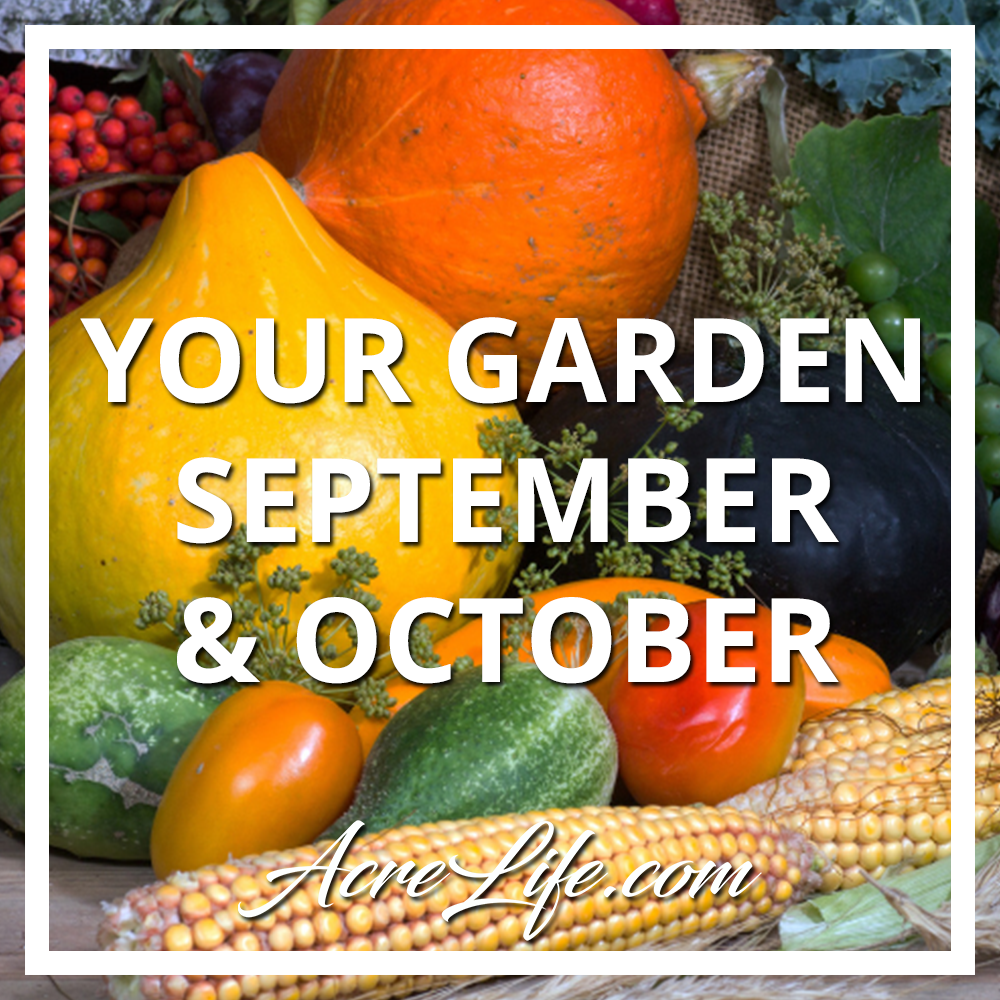
What To Do In Your Vegetable Garden In September and October
You may be thinking that you get to take a break from your vegetable garden in September and October. After all, you just spent Spring and Summer planting, watering and harvesting. If you need a break then you have earned it. You certainly don’t HAVE to work in your garden in the Fall. But if you decide that you would like to continue playing in the dirt and growing more food I can help you decide what to plant.
September In The Garden
The best use of your time in September would be to get your garden ready for planting in October.
- Harvest any remaining vegetables
- Clean out the plants that have stopped producing and have died out
- Pull all of the weeds and grass that have accumulated
- Mix in compost or amendments to enrich your soil
- Plan your Fall garden
October In The Garden
After you have decided what to plant you should consider when to plant. Rather than planting everything at once, you could stagger plantings 5-7 days apart so that you will have a continuous yield to harvest. I especially like this method when planting lettuce because I feel like I am competing with the bugs for my salad.
You can experiment with what will grow in your area. Don’t be discouraged if you want to grow Arugula but it doesn’t show up on your plant hardiness zone map. It isn’t going to hurt to plant it and see what happens. If it grows, you will feel like a master gardener with super growing powers. If it doesn’t then, you wasted a few dollars on seeds. I think the rewards outweigh the risk.
Fall Vegetables
I have to admit that Fall vegetables were not my favorite growing up. I was a pretty picky eater and some might say I still am. However, my tastes have changed with age and I am looking forward to growing several of these vegetables this Fall. The following is a list of vegetables that you should consider planting in October.
- Arugula
- Beets
- Broccoli
- Brussels Sprouts
- Cabbage
- Carrots
- Collards
- Cauliflower
- Green Onions
- Kale
- Kohlrabi
- Leeks
- Lettuce
- Mustard
- Peas
- Potatoes
- Radish
- Rutabagas
- Spinach
- Swiss Chard
- Turnips
Many of these vegetables will survive below freezing temperatures and some even improve in taste with the cold weather.
Planting Garlic In The Fall
Fall is the best time to plant garlic however, it won’t be ready to harvest until Spring. You will want to plant according to your varieties instructions and then mulch it with 5-8 inches of seedless straw. It will be one of the first things to sprout up in the Spring.
Why You Should Plant Garlic in the Fall
Caring For Your Garden
https://amzn.to/33Kf1NeWhen the temperature dips below freezing you can protect your vegetables by covering them with a frost protection cloth. I like putting the cloth over these hoops for protecting seedlings and short crops from frost. You should water your garden really well once a week rather than watering just a little every day. Be sure to keep an eye out for pests in the garden. Slugs, cabbage moths and cutworms are still active in the cold weather.
I would love to hear what you are planting this Fall.